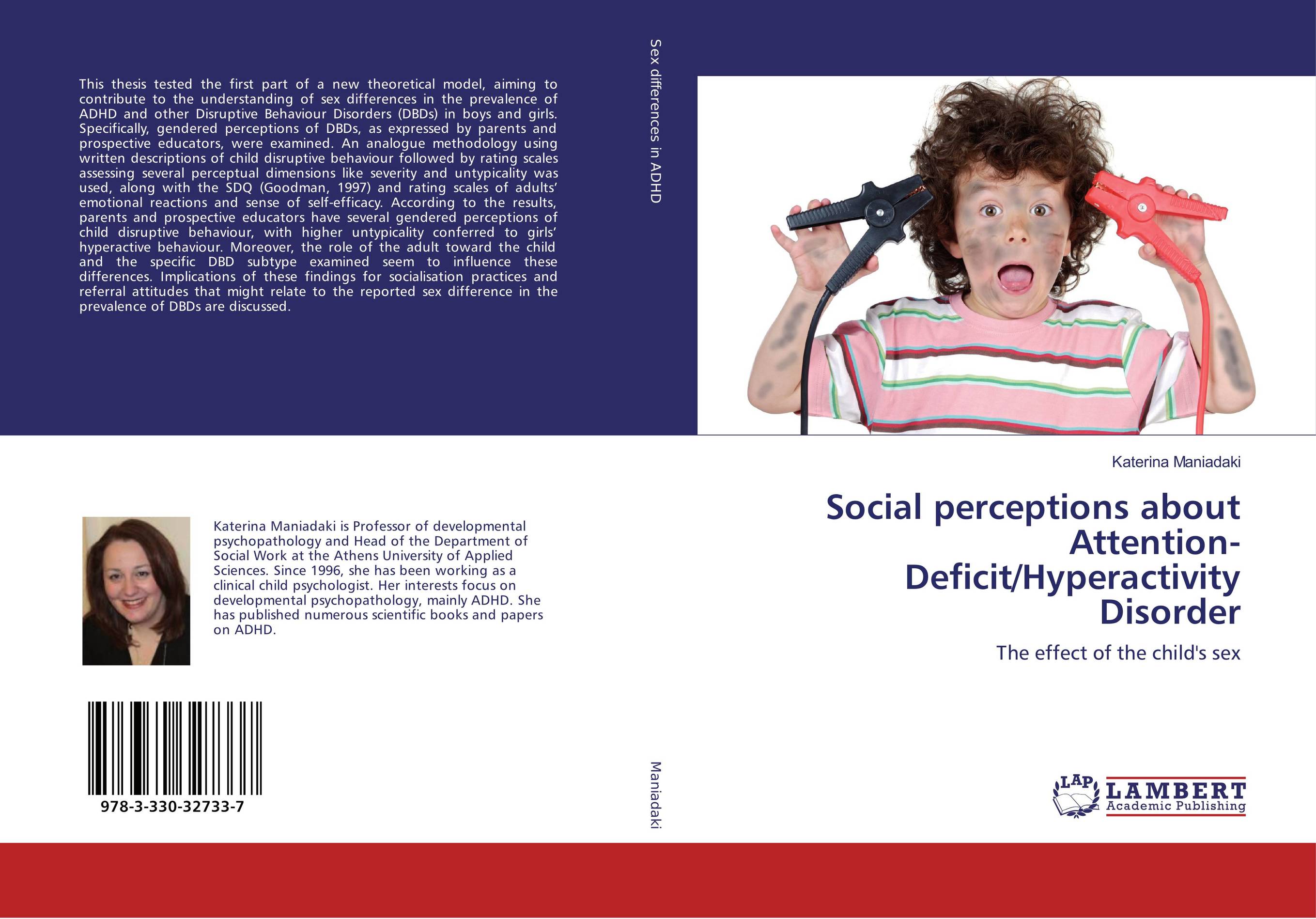| Поиск по каталогу |
|
(строгое соответствие)
|
- Профессиональная
- Научно-популярная
- Художественная
- Публицистика
- Детская
- Искусство
- Хобби, семья, дом
- Спорт
- Путеводители
- Блокноты, тетради, открытки
Social perceptions about Attention-Deficit/Hyperactivity Disorder. The effect of the child's sex

В наличии
| Местонахождение: Алматы | Состояние экземпляра: новый |

Бумажная
версия
версия
Автор: Katerina Maniadaki
ISBN: 9783330327337
Год издания: 2017
Формат книги: 60×90/16 (145×215 мм)
Количество страниц: 324
Издательство: LAP LAMBERT Academic Publishing
Цена: 44202 тг
Положить в корзину
| Способы доставки в город Алматы * комплектация (срок до отгрузки) не более 2 рабочих дней |
| Самовывоз из города Алматы (пункты самовывоза партнёра CDEK) |
| Курьерская доставка CDEK из города Москва |
| Доставка Почтой России из города Москва |
Аннотация: This thesis tested the first part of a new theoretical model, aiming to contribute to the understanding of sex differences in the prevalence of ADHD and other Disruptive Behaviour Disorders (DBDs) in boys and girls. Specifically, gendered perceptions of DBDs, as expressed by parents and prospective educators, were examined. An analogue methodology using written descriptions of child disruptive behaviour followed by rating scales assessing several perceptual dimensions like severity and untypicality was used, along with the SDQ (Goodman, 1997) and rating scales of adults’ emotional reactions and sense of self-efficacy. According to the results, parents and prospective educators have several gendered perceptions of child disruptive behaviour, with higher untypicality conferred to girls’ hyperactive behaviour. Moreover, the role of the adult toward the child and the specific DBD subtype examined seem to influence these differences. Implications of these findings for socialisation practices and referral attitudes that might relate to the reported sex difference in the prevalence of DBDs are discussed.
Ключевые слова: ADHD, Disruptive Behavior Disorders, Gender differences, sex differences, social perceptions



